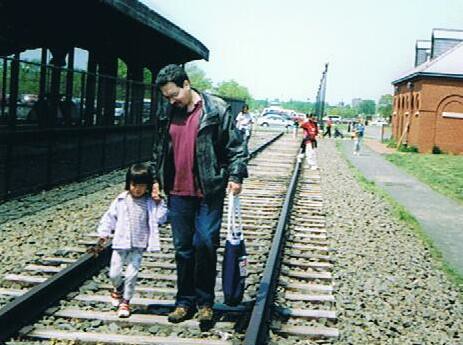|
|
Friday, November 13th, 2009
Calm but amazed, I said nothing: It was as if I had never noticed before what a strange shape my life had taken.
This is a really startling admission by Kemal so late in the story (chapter 75). Much of the first 400 pages of the book has been him apologizing for and justifying the weird shape of his life -- legalistic attempts to define the good life so that it will include his odd self-deception. But this line strikes me as really sincere, I can sympathize with him here without feeling hypocritical.
posted evening of November 13th, 2009: Respond
➳ More posts about Orhan Pamuk
|  |
Sunday, November 15th, 2009
It is getting much easier in the last fifth of Museum of Innocence to relate to Kemal as a human being rather than a monster... Enough so that I get a little sympathetic thrill of suspense at the end of chapter 78, when he says
So I got back into bed, and happily imagining that she would soon return, I fell asleep. All through the chapter I have been thinking Wait, why is this not the "happiest moment" of his life?... I was speculating that possibly Kemal's repeated efforts to define "happiness" and to see how he can make it apply to his life, are a marker for the westernized nature of his worldview and of the circles he moves in -- with reference to Fazıl's statement in Snow that he must be an atheist -- i.e. westernized -- because "I don't care about anything except love and happiness."
posted evening of November 15th, 2009: Respond
➳ More posts about Readings
|  |
Friday, December 25th, 2009
For a few months now I have had fixed in mind that I wanted to write a critical essay on Museum of Innocence with reference to Snow, examining (in a nutshell) Kemal's love for Füsun as a displacement of his desire to be authentically Turkish, a reaction to his feelings of alienation. But frankly I think writing this piece would take critical, sociological and psychological chops that I do not have -- every time I have started all I have come up with is a condemnation of Kemal for acting in bad faith -- which is not what I was aiming for. So, I'm going to move on from this, try and find something else to think about... It is worth noting -- I didn't blog the end of the novel partly out of wanting to avoid spoilers, partly out of wanting to save material for the essay I was going to write -- that the last 50 pages of the book were just fantastically good reading. All through the book I felt conflicted about not liking Kemal, wondered if it was even worth reading with such a jerk for a narrator; but the end of the book took away any doubts I had been feeling about whether this is a great novel.
posted evening of December 25th, 2009: 2 responses
|  |
Sunday, January third, 2010
Adam Shatz has published "Wanting to Be Something Else", a review of Museum of Innocence, in the new London Review of Books -- this is the best, most thoroughly developed writing about Pamuk I can remember reading since McGaha. Shatz traces themes of alienation and longing in Pamuk's writing from The White Castle through The Black Book, My Name is Red, and Snow up to the current book, examining what drives his books, where they succeed and where they fall short. This piece is required reading for anyone interested in understanding Pamuk's fiction.
posted morning of January third, 2010: Respond
|  |
Sunday, May 9th, 2010

Slowly, slowly, it developed: the idea of finding real objects, then giving it to the imaginary people, which then would later be exhibited in the museum, then the love story began to develop in my mind. With this novel, I was also collecting objects, say an old lottery ticket; and thinking that I would in fact integrate this, make it a part of my novel.
So some of the novel came from the objects you were finding.
Some of it; and sometimes it would be the other way around, that I would write the novel (as of course stories have their own course), and then I would come -- I needed an object, but I don't have the object, and I would leave, since I didn't want to stop writing, enjoying writing the novel, I would leave it with dot-dot-dot, and look for an appropriate object, or wait for it. I was taking my time...
At the Guardian, Richard Lea interviews Orhan Pamuk about the process of composing The Museum of Innocence, and building the Museum of Innocence; Pamuk notes that "the Museum is not an illustration, will not be an illustration of the novel; and neither the novel is a description of the Museum. They are separate entities, intertwined, representing the same story."Embedding is disabled; but go watch the interview at the Guardian site, it's great.
posted morning of May 9th, 2010: Respond
|  |
Tuesday, June 8th, 2010
Last November, Harry Kreisler of UC Berkeley's Institute for International Studies interviewed Orhan Pamuk about his new novel and about the novel's relationship with history:
(via ebookforall.com)
posted morning of June 8th, 2010: Respond
| |
|
Drop me a line! or, sign my Guestbook.
•
Check out Ellen's writing at Patch.com.
| |

